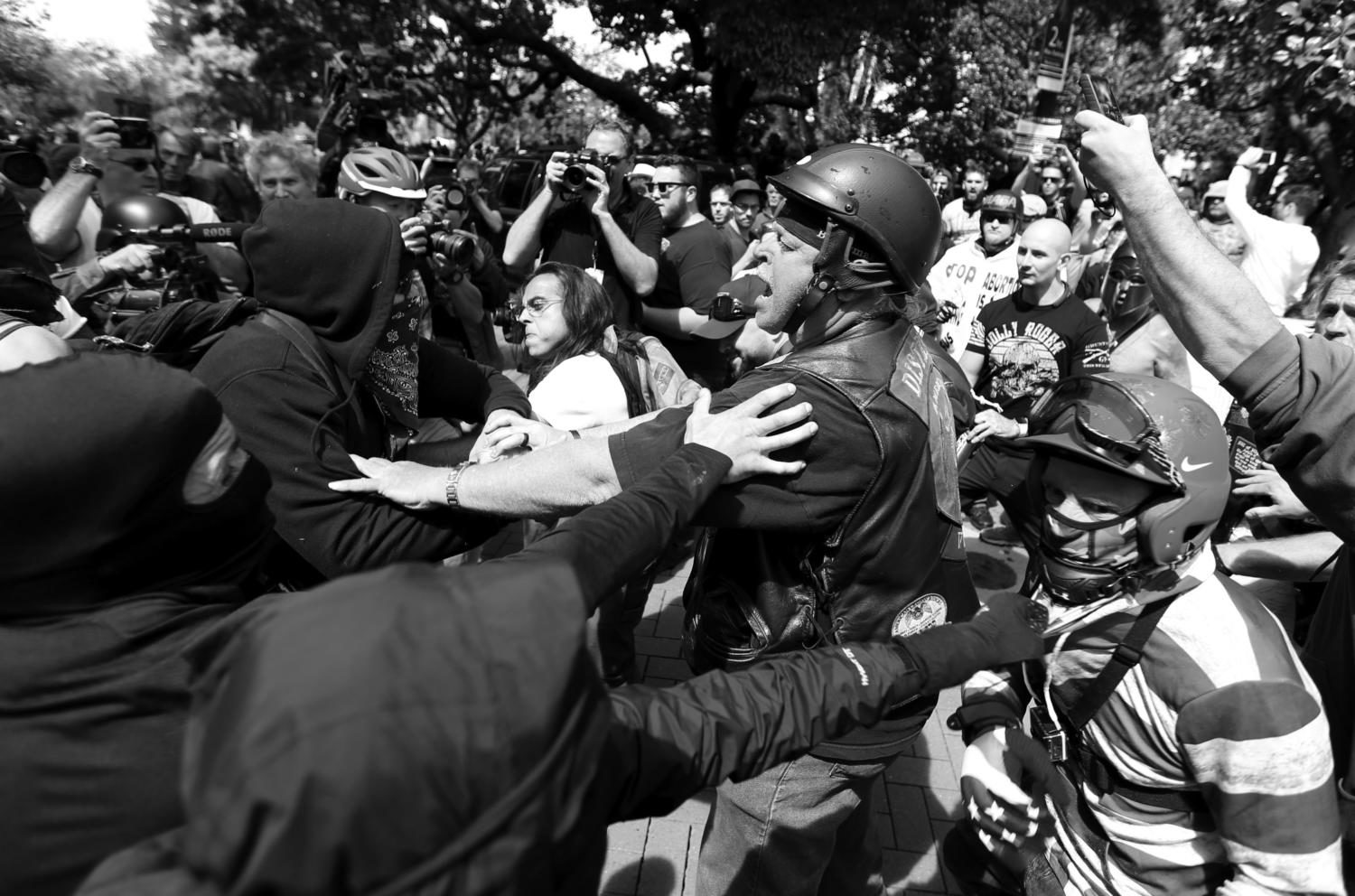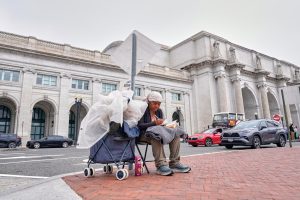Can the social justice movement use violence?
Anti- and pro-Trump supporters clash during competing demonstrations at Martin Luther King Jr. Civic Center Park in Berkeley, Calif., on Saturday, April 15, 2017. (Anda Chu/Bay Area News Group/TNS)
May 6, 2017
The social justice movement is broader, deeper and stronger today than it has been in decades. But the assault on members of the movement by racist goons in Berkeley, California this month raises an urgent question: under what conditions, if any, can members of the movement employ violence?
The answer to this question lies in the movement’s three main aims: to prevent injustices from occurring, to stop ongoing injustices and to rectify past injustices.
Violence is unlikely to promote any of these aims.
Decades of foreign adventures have left the U.S. government with an extremely strong military, resulting in law enforcement officers who are better armed and better equipped than ever before.
Any member of the movement attempting to use violence against law enforcement to prevent injustice will not only fail, but their actions will result in an even more brutal crackdown on those who are actually trying to enact justice.
Furthermore, there are no remotely plausible scenarios in which protesters could use violence to coerce the U.S. government into redressing historical injustices. Matters might be different if we lived in a police state, but we do not.
Using violence against ordinary citizens and their property is also problematic. Plus, these are softer targets than the police or military may be.
Ordinary citizens who favor unjust policies and laws are not directly responsible for carrying them out or enforcing them. Hence, members of the movement can’t prevent injustice from happening or continuing to happen by roughing up a shop owner or breaking their store windows because of their views.
Nor can members of the movement frighten him into supporting restitution for past injustices. Indeed, bullying of this sort is exactly what the social justice movement stands against.
Furthermore, it is important to note that most ordinary citizens do share the goals of the social justice movement. According to recent polls, 60 percent of Americans oppose a U.S.-Mexico border wall (CNN: February 2017), 70 percent of Americans oppose a ban on Syrian refugees (Quinnipiac: February 2017) and most Americans recognize that corporations (67 percent) and the wealthy (63 percent) pay too little in taxes (Gallup: April 2017).
The success of the movement depends on continuing to win over ordinary citizens. Violence will only alienate them and embolden oafish opportunists promising “law and order,” to defend their unjust status quo. What of the louts, hoodlums and yobbos, such as those who attacked protesters in Berkeley? Each of us has a right of self-defense against unjustified attacks, provided that it is exercised in a manner that is proportionate (minimal force to avoid injury) and discriminant (avoids harm to the innocent).
Nevertheless, punching Nazis will not make our healthcare system any fairer. Violence between the social justice movement and bigoted brutes could provide reactionary forces with the excuse they want to restrict the right to protest, to harass members of the movement and to make its aims harder to achieve.
The wisest course of action is to take every step to avoid the need for violence while remaining focused on preventing unfairness, stopping ongoing injustice and seeking restitution for those who suffer the effects of inequality.
The movement’s greatest asset is its unswerving commitment to justice for all, not violence against a few.







